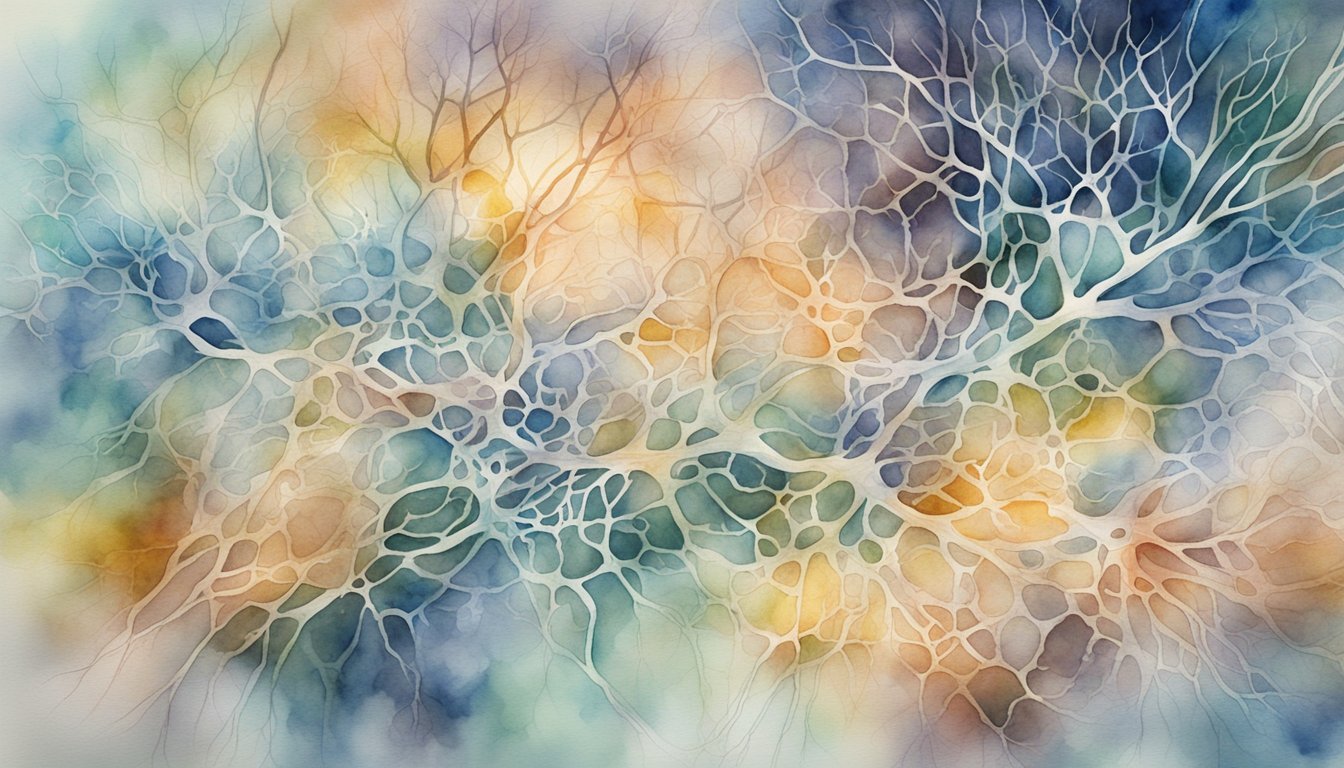Fundamentals of Brain Cells
The brain is an intricate assembly of cells, primarily neurons and glial cells, each with critical functions. These cells not only support thinking and body regulation but also play a pivotal role in the central nervous system.
Types and Functions of Neurons
Neurons, or nerve cells, are the central units of the brain’s communication system. A typical neuron consists of a cell body, axons, and dendrites. The axons transmit electrical impulses away from the neuron’s cell body, while dendrites receive signals from other neurons. These nerve cells are fundamental in processing and transmitting information, making them critical to all aspects of brain function.
Glial Cells and Their Roles
Besides neurons, the brain contains a multitude of glial cells, which are essential for maintaining homeostasis, providing support and protection for neurons. There are several types of glial cells, including astrocytes that regulate blood flow and ion concentrations, oligodendrocytes responsible for insulating axons with a myelin sheath, and microglia which act as the brain’s immune cells.
Neural Communication
Neural communication is a sophisticated process involving the synapse, the junction where the axon tip of a neuron meets a target neuron, muscle, or gland cell. Neurons communicate at synapses through neurotransmitters, chemical signals that bridge the gap between cells. These vital chemical signals enable the functioning of the brain and the central nervous system, which encompasses a broad array of human activities, from muscle coordination to thought processing, emotions, and memory.
Cognition, Behavior, and Brain Health

The interplay between cognition and behavior is deeply influenced by the health of the brain. The complex neural circuits that facilitate learning, govern movement, and process sensory information are fundamental to these aspects of human experience.
Learning, Memory, and the Brain
The brain’s ability to learn and form memory hinges on the function of the hippocampus and changes at synapses—junctions between nerve cells where information is transmitted. The process of learning prompts the formation of new synaptic connections, facilitating the storage and retrieval of information. It’s known that memory and learning are not relegated to a single region; instead, the cerebral cortex, hippocampus, cerebellum, and other regions work in tandem.
Neurological Disorders
Disruptions in brain health can lead to various neurological disorders such as Parkinson’s disease, where the degeneration of the basal ganglia affects movement, or schizophrenia, which involves complex changes in the brain’s structure and neurotransmitter systems. A stroke, which is caused by a disruption in the brain’s blood supply, can also cause a range of cognitive and physical impairments.
The Brain and the Senses
Senses like taste, smell, and touch are the result of the brain interpreting sensory information from the environment. The lobes of the brain, such as the occipital lobe for vision and the parietal lobe for touch, are organized to process this information. The integration of sensory inputs contributes to our understanding and navigation of the world.
Brain Structure and Its Impact
The human brain, a complex organ, is organized into various structures such as the corpus callosum, which facilitates communication between the two hemispheres; the cerebrum, responsible for higher cognitive functions; and the brainstem, controlling respiration and other involuntary functions. The forebrain, including the thalamus and hypothalamus, regulates emotions, hormonal responses, and more. Even slight changes in the brain’s structure can have profound effects on behavior and cognition.

